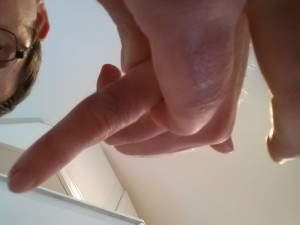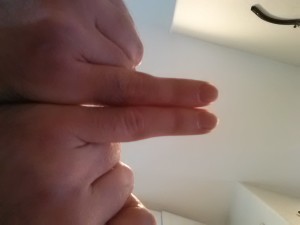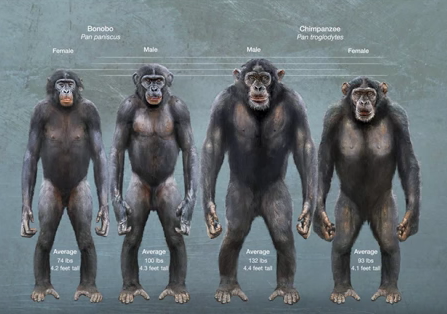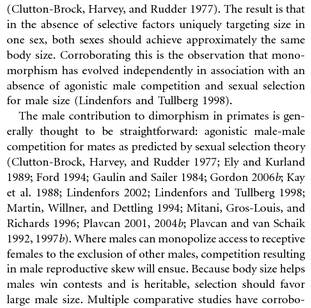For a long time I never believed in this idea that a heterosexual male could just go to the local gym and just “lift” his way to a level of physical attractiveness to compensate for his shorter than average height. It was something that was promoted by a large percentage of young teenage and adult males in the USA today, who treat exercise as a preferred form of hobby or past-time.
It seems that I might be wrong to a certain level. In doing research on what exactly women expect from potential romantic male partners, I came across media articles that referred to this one study done in Australis. From Business Insider, there was an article entitled “Women’s Standards Of Attractiveness Are As Unrealistic As Men’s“. The website for Bloomberg magazine also wrote about it entitled “Women Choose Mates by Shoulder Size First, Research Suggests.”
Out of over 100 female subjects (yes, I realize that the size is not that large) that were asked to judge the male form for attractiveness, it seems that shoulder-to-waist ratio was the most determinant factor, followed in second by height, and third by male genitalia size. Related to this subject, there might be evidence that have a shoulder/waist ratio close to the golden ratio may be the best for attractiveness, which is 1.618. This means you measure the width of your shoulders to the width of your waist.
For the longest time, there were always anecdotal evidence spoken by females who were asked about what they found physically attractive in males. They would say that having wide, broad shoulders was one of the key components. This 2013 study seems to confirm this theory.
So how does this help the guy who might have stopped growing taller, but obviously want to go to the gym to make themselves more appealing to the opposite sex?
It seems to be linked to the level of testosterone in a males body again. I found out back in the 2012-2014 time that there is an ideal range of testosterone that should be going through a guy’s body around puberty to make them above average in height. The level of T should be higher than average, but not too high.
What is well known from a study in anatomy is that even after the growth plates in the young guys’ body are gone which contribute specifically for vertical growth, the sternum area is still however cartilage, specifically fibrocartilage. It seems that if the young male has a high level of T, that testosterone will in fact cause the fibrocartilage to expand, which will cause the overall skeleton to grow in width. This creates the wider torso, broader shoulder look. This is what happens when basketball scouts say that the rail skinny tall nba draft pick will eventually fill out. When the vertical growth has stopped, then the width growth starts, expanding the rib cage, and thus the overall upper region of the shoulders.
However, that fibrocartilage in the sternum doesn’t last forever either. Around the age of say 25-27, that cartilage also starts to ossify. This means that if you wanted to expand your torso and make your shoulders bigger and wider, you need to do it in your early 20s to mid 20s.
The best type of exercise which I can recommend anyone, specifically young adult guys around the age of 18-26, who is looking to make themselves have large shoulders, is to focus on just 3 exercises. 1) swimming (specifically the fly stroke), 2) pull ups and 3) shoulder flys.
Now, let’s remember the golden ratio. One need to combine the width shoulders with a narrow waist, which means that they should combine it with the following 2 types of exercise to narrow their waist. 1. Abdominal/Core exercises 2) Cardio (You might not even need cardio if you swim with high enough intensity to burn off the adipose tissue around the waist area).
Let’s remember the things we learned years before. Probably the most popular type of male body that girls want is the mesomorphic type, but more specifically the “swimmers’ build”. Swimmers get their body shape from swimming. If I could just compact down my recommendation for the 1 type of exercise a young adult guy can do to make themselves more attractive to the females, it would be to focus on swimming, and swim with high intensity.
For the longest time, I said that bodybuilding and weightlifting is a waste of time and stupid and doesn’t work in making the females more attracted to the guy, since I knew for a fact that exercise will not make a short guy taller. I thought that height was the most important factor in female attraction.
That may not be the complete picture here. Height is indeed critical and important, but a more accurate description of female attraction is being able to recognize in a guy the physical attributes from the male body to reveal that when that guy was going through puberty, they had the right level of testosterone going through their body. Females can biologically, instinctually recognize which males have the bodies which have the right proportion sizes.
It used to be in the 90s and 80s that the guy who gets the best looking females in the years of high school were football players, not basketball players. Basketball players are on average taller than football players, but football players are much wider, thus wider in the shoulders than basketball players. However, I would be willing to guess that there would be a 60/40 ratio if a large number of females were asked to just whether they would prefer the 6′ 2″ football player body with a 1.6 shoulder-waist ratio to the 6′ 4″ basketball player with a 1.4 shoulder-waist ratio.
There does seem to a be a height cut-off point where the taller you are, the attraction from females actually decrease. There has always been at some level this image that the super tall thin guy is not as masculine (thus attractive) as the less tall, but still tall guy who has wider shoulders, and is buff.
So for the guys out there, I would suggest that one should focus on weightlifting or exercise in general to a certain point to help compensate for height, if they are shorter than average. And when I am talking about exercise, I am saying it to focus on just 2 results. 1) Increase the width of the shoulders and 2) decrease the width of the waist to the golden ratio. 1.6
Phase 1 – When you are still going through puberty and still growing vertically – Exercise Recommended – Swimming. It seems that swimming actually decrease the bone mineral density, which is something pediatricians are against, but from my personal research, the lower than average BMD is nothing to be worried about, since in the long term, that eventually increases as we get older to full adulthood.
Phase 2 – When you are just finished with growing taller and finished puberty – Exercise Recommended – High Intensity Swimming with the Fly stroke combined with pull ups and shoulder flys
Phase 3 – When you are around the age of 27 and older – Focus only on core exercises to decrease the waist measurement, since you can no longer increase the width of your shoulders, since the fibrocartilage have finally finishes ossifying around the ages of 26-27.
Here is where weightlifting aka bodybuilding fails, and doesn’t do anything. Do no do the following exercises, since they do nothing for you in the long term
- Squat
- Deadlift
- Bench press
- Bicep Curl -or any type of exercise that works the biceps
- Tricep Exercises
- Calf muscles exercises
- Leg presses
The exercise of squatting and deadlift is particularly useless and dangerous, to one’s back, hip, and knees. The exercises of bicep often cause tendonitis and bone spurs in the elbows and shoulder joint areas.
Remember that we are looking for “functional strength”. Functional strength refers to the strength that the rock climber gets from being able to lift their entire body weight over their head. Functional strength is what will make one light in weight, faster, and be more agile and quick on their feet. Functional strength is derived from using one’s own weight as the resistance to work one’s muscles. That is why I do not recommend exercising using barbells, dumbbells, and machines. Instead of lifting a weight in a predetermined path, one should be lifting and maneuvering a kettle bell.
Young men these days love to talk about their “gains” which I am guessing is just increases in the measurements of their muscles, but the increased muscularity is not what really attracts females, at least the majority of females. The real truth is that weightlifting and bodybuilding is something today’s young men do for themselves, to make themselves feel better about themselves, to give them the confidence, since exercise increases the level of testosterone and endorphins going through the body. It is more likely that the guy who is exercising to become extremely muscular is doing it to gain the admiration of other heterosexual males, rather than the sexual desire of females, since we are vane creatures and want to be admired, by both men and women.
If we look at pictures of say 2016 Arnold Schwarzenegger, we can see that all of his work in bodybuilding in his 20s to win those Mr. Olympia championships eventually were lost. Father time and mother nature takes away the “gains” we exercised for in our 20s and 30s. This is true for people like Ronnie Coleman, another former Mr. Olympia. His downfall with all his back and hip injuries show that weightlifting and bodybuilding is actually a very stupid, time wasting, and body damaging past-time which the American young adult men these days don’t realize yet. All that hard work is removed when we get older. Remember that before Arnold came along in the 80s, and his Venice Beach Gold’s Gym time in the 70s and early 60s, exercise was actually not a very big thing.
It wasn’t until the 80s that exercise and the need to have a ripped, muscular body was considered attractive by both the American male and female demographic. However, being tall, and having broad, wide shoulder have always been.
I honestly believe that weightlifting and bodybuilding is a fad that will not stand the test of time. Exercise is here to stay since the benefits from cardio workouts are too beneficial, although cardio can be bad for the joints. That is why I suggest swimming as the best form of exercise.




